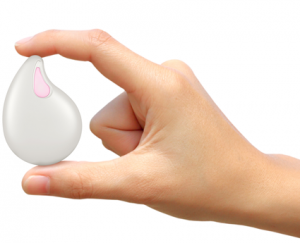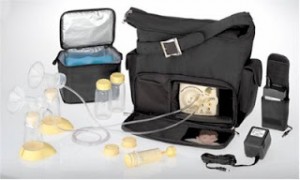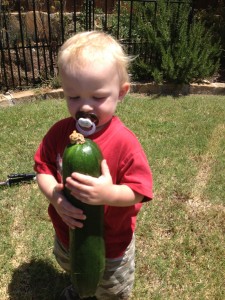Before I begin, I want to remind our new readers that I am a self-proclaimed granola, or “crunchy” mom. I realize that not everyone takes these issues as seriously as I do, and that’s ok. It is not my intent to be self-righteous in this post, but only to discuss some of my recent thoughts on organic living…
I recently returned from a trip to upstate/western NY, where I visited my sister and her family in their small rural town. My sister and her husband are real granolas, and they take the art of food preparation to a truly new level. At her home we were served fresh bread made from home soaked whole grains, butter that smelled like cheese from a local family farm, unpasteurized milk, and eggs with deep yellow/orange yolks—again from a local farm. We dined on whole wheat buttermilk pancakes, and my sister, with the help of a local cow, made the buttermilk! We topped off our visit with homemade vanilla ice cream made from fresh cream and sweetened with maple syrup.
When we left, I realized that my sister lives really “close” to her food. Other than herbs, she doesn’t grow the food herself (she lives on a small lot), but she knows who does, and as a result she is deeply aware of where her food comes from and how to best prepare it. Her food is natural, usually organic, and local.
We live in a small urban town and during the summer we try to buy most of our food from the local farmer’s market. The framer’s market is great because it gives the local farmers a direct to customer outlet for their foods. It allows small local family farms to not only survive, but to thrive. The farmers make more money selling directly to us, and we buy things cheaper than we could at the local supermarket. I love buying lettuce that was picked fresh in the morning, and I love talking to the farmer who picked it. I love knowing what fruits and veggies are in season in our area and waiting for the locally grown peaches, rather than buying peaches from Peru in the wintertime.
All of these things are part of what I would consider “organic living.” I use this term to mean living as a good steward of creation. Understanding where your food comes from, respecting the land it was grown on, or the cow that provided the meat, and generally treating creation and our bodies with respect.
Lately, buying organic is the newest fad in “nutritionism.” Just like the low-fat craze of the 80’s, the “organic” craze has come to mean buying anything with an organic label. The box of organic teddy grams is better than non-organic locally grown lettuce because it has the label “organic.” Organic lettuce grown in Honduras and shipped to the East Coast is better than lettuce grown on a local farm moving towards organic certification. Don’t think about the energy involved in shipping that lettuce from Honduras. Don’t think about how they actually make an organic teddy gram, the processing involved, or the trash and debris involved in the packaging. Organic teddy grams are just about as far from “organic” or close-to-nature as you can get, except maybe a bag of organic Doritos (is that possible?). But our label conscience society wants us to believe that those teddy grams are somehow good for us because they have the label organic.
I’m not trying to say that I don’t buy organic crackers or teddy grams, because I do. And I’m sure those organic teddy grams are better for your body than the regular teddy grams loaded with dyes and other harsh chemical additives and “spices.” What I’m saying is that organic living is really about moving away from these pre-packaged things, and moving toward locally grown and homemade products. It is about taking the time to prepare our own food, to understand our food, and to respect our environment and neighbors. It is about slowing down and making food preparation a part of our family life. Our culture is constantly pressuring us to go, go, go, and to buy, buy, buy, things that will make our life easier, and that usually means pre-prepared food products, and organic teddy grams. There will always be days when this cannot be avoided, but wouldn’t it be great if we could avoid it on most days. Like most things, I’m aiming for the 80/20 rule (achieve the ideal 80% of the time, don’t sweat it the other 20%).
If you’ve never considered this before, think about one practical way you can get more in touch with your food. This might mean making something from scratch that you normally buy pre-prepared (and this usually saves money.) If there is a local farmer’s market in your area, check it out. If not, maybe try to shop at a local store, you know the kind of store where they know your name after only 2 trips. If this isn’t possible, try to buy locally grown products at your grocery store and take a pass on those peaches from Honduras in January. And remember, as mothers, we are the main purchasers of food, so we really do have the power to change the way food is bought and sold in this country.











